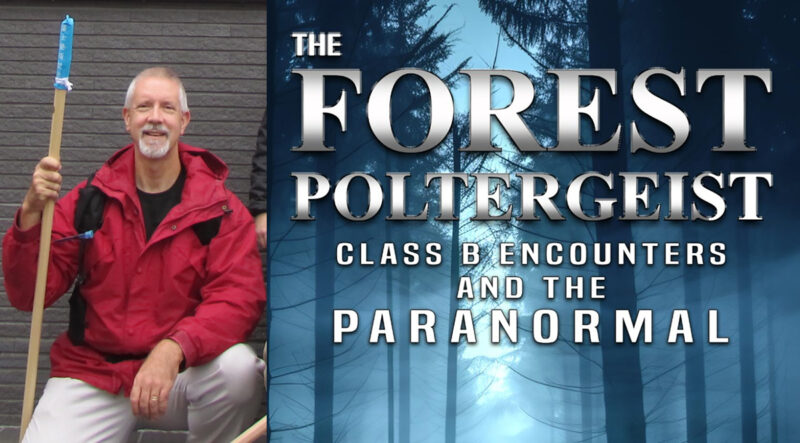Class B encounters in the wilds of North America have always been attributed to Sasquatch. But what if there was something else responsible for the tree knocks, thrown rocks and strange structures encountered in the forest across the continent?
Author Travis Watson, who writes under the pen name W.T. Watson, thinks there’s something beyond those encounters, and he suggests they could be poltergeist-related.
That theory provides the impetus for his new book The Forest Poltergeist: Class B Encounters and the Paranormal.
Watson started by looking at the smaller percentage of bigfoot cases that exhibited high strangeness, which had been an ongoing conversation with podcaster Seriah Azkath while appearing on “Where Did the Road Go?”.
“If you took all of the disturbances that are linked to Sasquatch out in the woods — what the BFRO calls the Class B encounter where people don’t actually see a Sasquatch, but there’s this weird stuff happening — and if you took all of those and put them in a house you’d have a poltergeist case,” the Kitchener resident said. “That stuck with me.”
Merging the worlds of Sasquatch with poltergeists, he explored the history of some of the more prominent cases of alleged poltergeist phenomenon, including late 1840s Rochester, New York.
“If you look at the history of spiritualism, the very first thing that the Fox sisters encountered when they began to communicate with the spirits was wood raps, or knocking on the walls,” Watson recalled. “All those are classic signs of poltergeist phenomena.”
He pointed to infamous poltergeist cases such as Enfield, the Black Monk of Pontefract and the Olive Hill case in Kentucky where objects were thrown and there was knocking on the walls.
Parapsychologist William G. Roll’s theory on recurrent spontaneous psychokinesis (RSPK) was tapped as a source for Watson, as he explained that even the people investigating Sasquatch are affecting their environment through their own anxiety.
“Think about a group of people who are dedicated Sasquatch researchers. They go out into the forest regularly into areas that are known Sasquatch habitats, and they’ve been looking for this creature for some time,” Watson said. “They haven’t had a lot of results. Maybe things are getting a little tight for them at home because a spouse or whoever is starting to object to the amount of time they spend away.”
Those pressures may translate into poltergeist activity or even a thought form — a manifestation of thoughts or emotions. Watson points out thought forms in a dedicated chapter that taps into the work of Dolores Ashcroft-Nowicki and Joseph Brennan.
“Ashcroft-Nowicki tells people this is how you make one of these things,” he said. “It’s basically a combination of desire, imagination and visualization. You have to have a very clear image of what it is in your mind and you have to be able to bring it to life in your mind.”
The act is akin to the Philip Experiment done by the Toronto Society for Psychical Research in 1972. Geneticist Alan R. G. Owen and psychologist Joel Whitton conducted the experiment where a group of people created a thought form and communicated with it through séance.
“A lot of people in Sasquatch research are determined to prove that there’s a bipedal primate species out there,” Watson admitted. “But it’s not going to solve the mystery because there’s all kinds of other weirdness that goes on around Sasquatch that people don’t want to see.”
Watson’s previous book, Sasquatch Canada: Beyond British Columbia, was more focused on the idea of Sasquatch as a physical entity, but he wanted to explore more of the “woo” side of the investigation.
“In my first book I was more on Side A, and in this book, I’m more on Side B,” he added. “I’ve never denied the existence of a physical creature, but I just think there’s a whole lot more going on out there.”
The Forest Poltergeist: Class B Encounters and the Paranormal was published on November 20, 2023, through Beyond the Fray Publishing. It’s available through Amazon.

